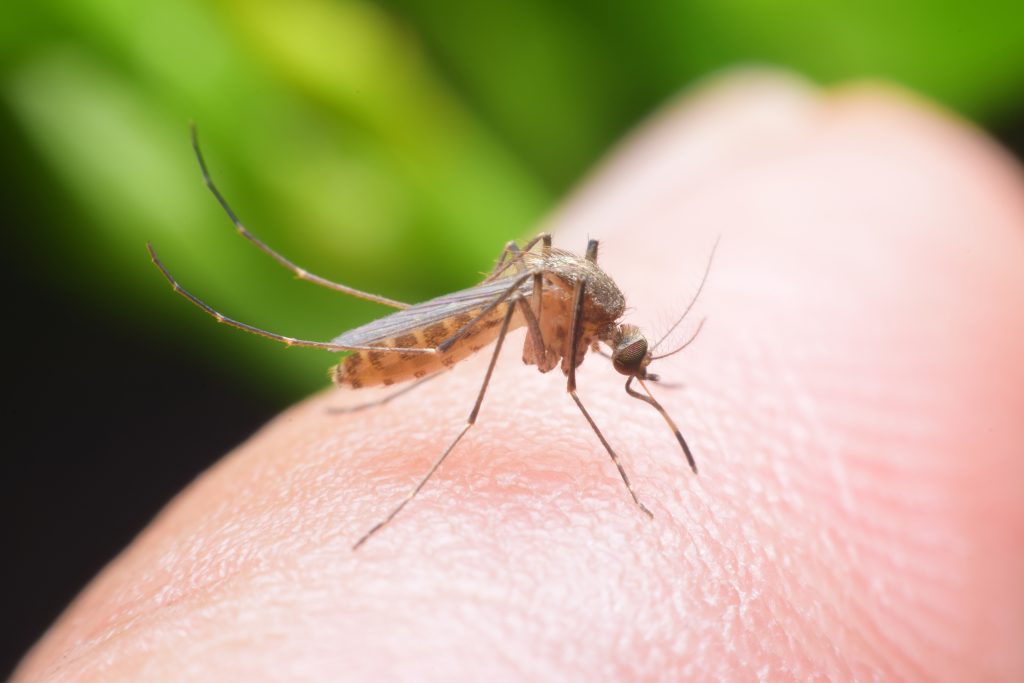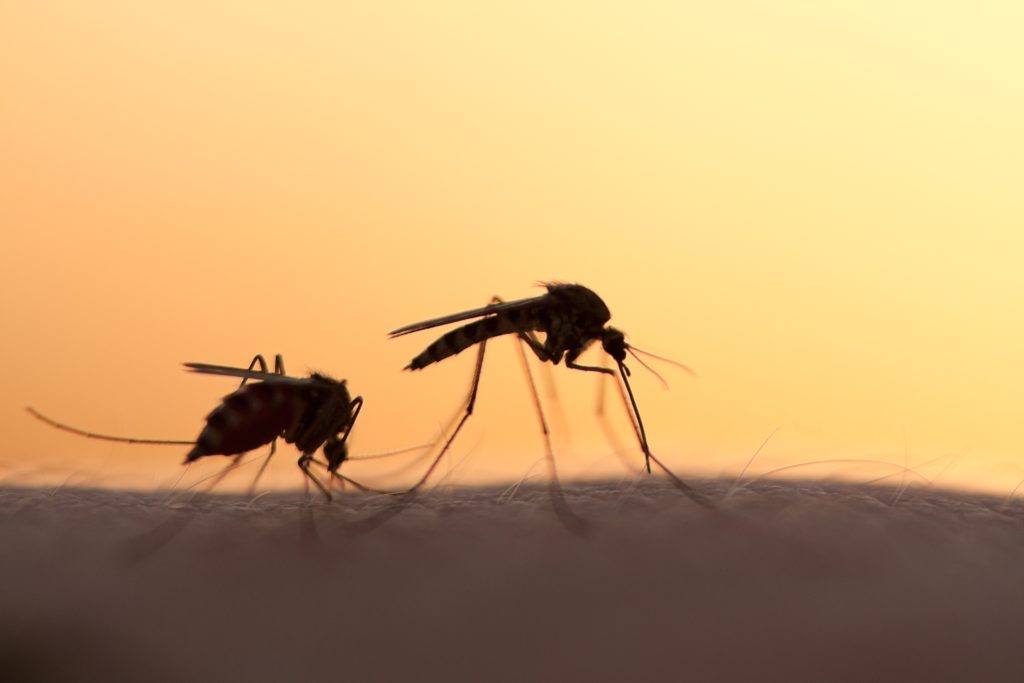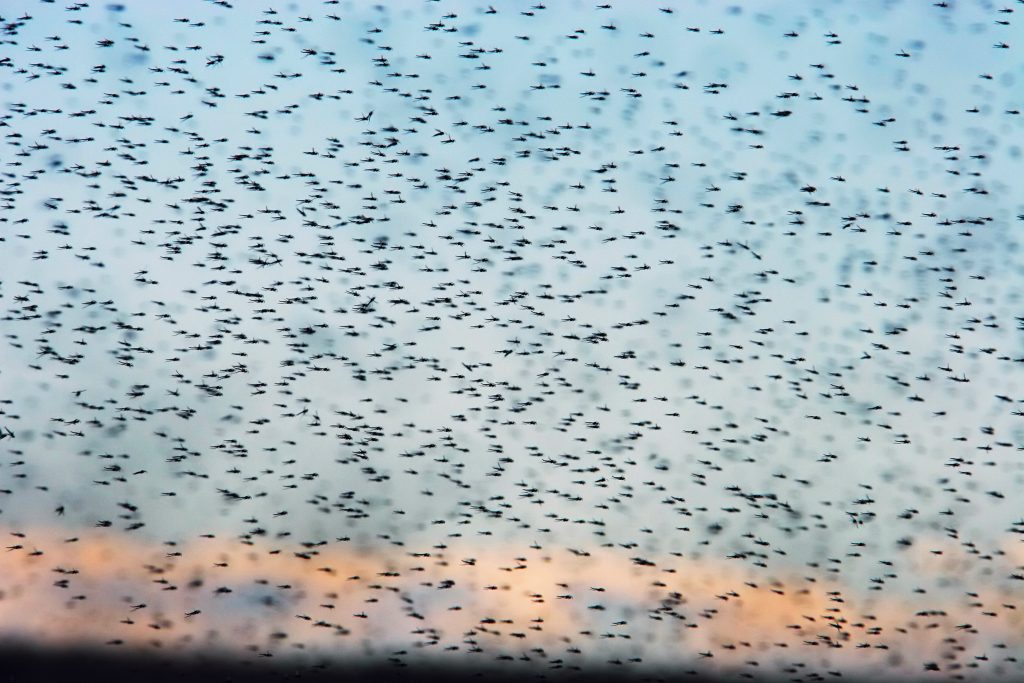Intervention Thresholds
To guide mosquito control efforts in Utah County, specific thresholds have been set. These thresholds help determine when and how to take action against adult mosquitoes, focusing on both nuisance reduction and public health protection, especially concerning diseases like West Nile Virus (WNV).

Level 0 (None)
- Surveillance
- No adult mosquito biting activity.
- Action:
- Develop and review West Nile Virus (WNV) response plan.
- Review mosquito control program.
- Maintain projects aimed at reducing mosquito breeding sites.
- Ensure necessary resources are available for surveillance and emergency response.
- Review and update community outreach and public education programs.
- Establish communication with other public health professionals such as the Department of Agriculture, veterinarians, etc.

Level 1 (Low) Late Spring, Early Summer
- Surveillance:
- Biting adult mosquitoes active.
- Begin field sampling in known Culex mosquito habitats starting mid-April.
- Deploy limited CDC traps to detect emerging adult mosquito vectors.
- Initiate early trapping in May, weather permitting, with regular weekly trapping from June through September.
- Utilize sentinel traps in areas like Goshen Elementary, Genola, Wild Wings, Camelot, Provo Bay, and Inlet Park, which have historically detected WNV-infected mosquitoes.
- Conduct resistance studies using CDC bottle bioassays or caged field trials to assess mosquito resistance to adulticides.
- Action:
- Continue actions from Level 0.
- Test mosquito pools of Culex species weekly for WNV, St. Louis Encephalitis (SLE), and Western Equine Encephalitis (WEE) using qPCR testing. Positive WNV results increase the urgency for enhanced control measures.
- Assess mosquito populations and development stages to determine the need for larviciding, considering factors like aquatic life, organic matter, water quantity, temperature, and mosquito species. Apply larvicides when mosquito larvae exceed 3–5 per dip.
- Conduct evening (9 PM–12 AM) adulticiding with ULV foggers as needed, based on trapping data. Initiate adulticiding when trap counts exceed 50 adult Culex mosquitoes in sentinel areas.

Level 2 (Moderate) Trap Number Over 1000
- Surveillance:
- Increase in biting activity from adult mosquitoes.
- Continue regular field monitoring for upcoming mosquito hatches, indicating a rise in Culex species.
- Maintain regular CDC trapping countywide from June through September.
- Monitor traps near the east side of Utah Lake to assess the need for aerial spraying in areas inaccessible to ULV fogging.
- Check veterinary clinics and the EDCO website for reports of WNV in horses. Detection of WNV in horses will escalate the response to Level 3.
- Action:
- Continue actions from Level 1.
- Initiate aerial spraying when trap counts reach 1,000 Culex mosquitoes, typically in late June or early July.
- Continue weekly testing of Culex mosquito pools for WNV, SLE, and WEE using qPCR testing. Positive WNV results increase the urgency for enhanced control measures.
- Increase evening fogging operations, deploying 4–9 trucks to target areas of concern and create buffer zones between mosquito sources and major communities.

Level 3 (High) Positive WNV, SLE, WEE Test
- Surveillance:
- Confirmed presence of WNV in mosquito populations or local animals.
- Intensify surveillance efforts in affected areas.
- Action:
- Implement all actions from Levels 0 to 2.
- Expand aerial and ground spraying operations to cover larger areas.
- Enhance public communication efforts to inform residents about the increased risk and preventive measures.
- Collaborate closely with healthcare providers and veterinary services to monitor and respond to new cases.